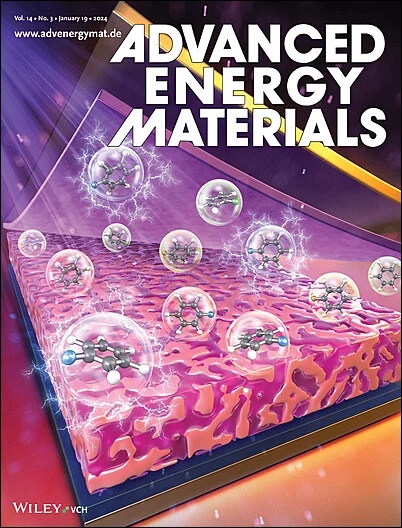Regulating Sodium Deposition Kinetics to Decouple the Electrochemo‐Mechanical Effects in Anode‐Free Sodium Batteries
IF 26
1区 材料科学
Q1 CHEMISTRY, PHYSICAL
引用次数: 0
Abstract
Sodium (Na) metal batteries with an anode‐free configuration exhibit a high energy density comparable to that of practical lithium‐ion batteries. However, the intricate electrochemo‐mechanical effects arising from the inherent softness of Na during deposition, in conjunction with the problem of soft short circuits at high current densities, have impeded the practical application of anode‐free Na batteries. Herein, the critical factor for decoupling the electrochemo‐mechanical effects is revealed to lie in controlling the kinetically rate‐determining step during Na deposition. Specifically, the charge‐transfer‐dominated Na deposition exhibits low risk of dendrites growth, whereas the diffusion‐controlled Na deposition requires external pressure to maintain uniform deposition and is prone to generating detrimental internal stresses in the cell. It is shown that appropriately increasing the salt concentration in the electrolyte can facilitate sufficient Na调节钠沉积动力学以解耦无阳极钠电池中的电化学-机械效应
具有无阳极结构的钠(Na)金属电池具有与实用锂离子电池相当的高能量密度。然而,由于钠在沉积过程中固有的柔软性所引起的复杂的电化学-机械效应,以及在高电流密度下的软短路问题,阻碍了无阳极钠电池的实际应用。本文揭示了电化学-机械效应解耦的关键因素在于控制Na沉积过程中的动力学速率决定步骤。具体来说,电荷转移主导的钠沉积表现出较低的树突生长风险,而扩散控制的钠沉积需要外部压力来保持均匀沉积,并且容易在细胞中产生有害的内应力。结果表明,适当提高电解液中的盐浓度可以促进电极表面有足够的Na+可用性,从而保证Na的沉积受到电荷转移的控制。因此,Na沉积的临界电流密度可以显著提高到20 mA cm−2。此外,以Na3V2(PO4)3为阴极的无阳极钠电池可以在10℃(≈10.7 mA cm−2)的高电流下实现快速充电。这一贡献为无阳极钠电池的设计、实现和操作提供了有价值的见解。
本文章由计算机程序翻译,如有差异,请以英文原文为准。
求助全文
约1分钟内获得全文
求助全文
来源期刊

Advanced Energy Materials
CHEMISTRY, PHYSICAL-ENERGY & FUELS
CiteScore
41.90
自引率
4.00%
发文量
889
审稿时长
1.4 months
期刊介绍:
Established in 2011, Advanced Energy Materials is an international, interdisciplinary, English-language journal that focuses on materials used in energy harvesting, conversion, and storage. It is regarded as a top-quality journal alongside Advanced Materials, Advanced Functional Materials, and Small.
With a 2022 Impact Factor of 27.8, Advanced Energy Materials is considered a prime source for the best energy-related research. The journal covers a wide range of topics in energy-related research, including organic and inorganic photovoltaics, batteries and supercapacitors, fuel cells, hydrogen generation and storage, thermoelectrics, water splitting and photocatalysis, solar fuels and thermosolar power, magnetocalorics, and piezoelectronics.
The readership of Advanced Energy Materials includes materials scientists, chemists, physicists, and engineers in both academia and industry. The journal is indexed in various databases and collections, such as Advanced Technologies & Aerospace Database, FIZ Karlsruhe, INSPEC (IET), Science Citation Index Expanded, Technology Collection, and Web of Science, among others.
 求助内容:
求助内容: 应助结果提醒方式:
应助结果提醒方式:


